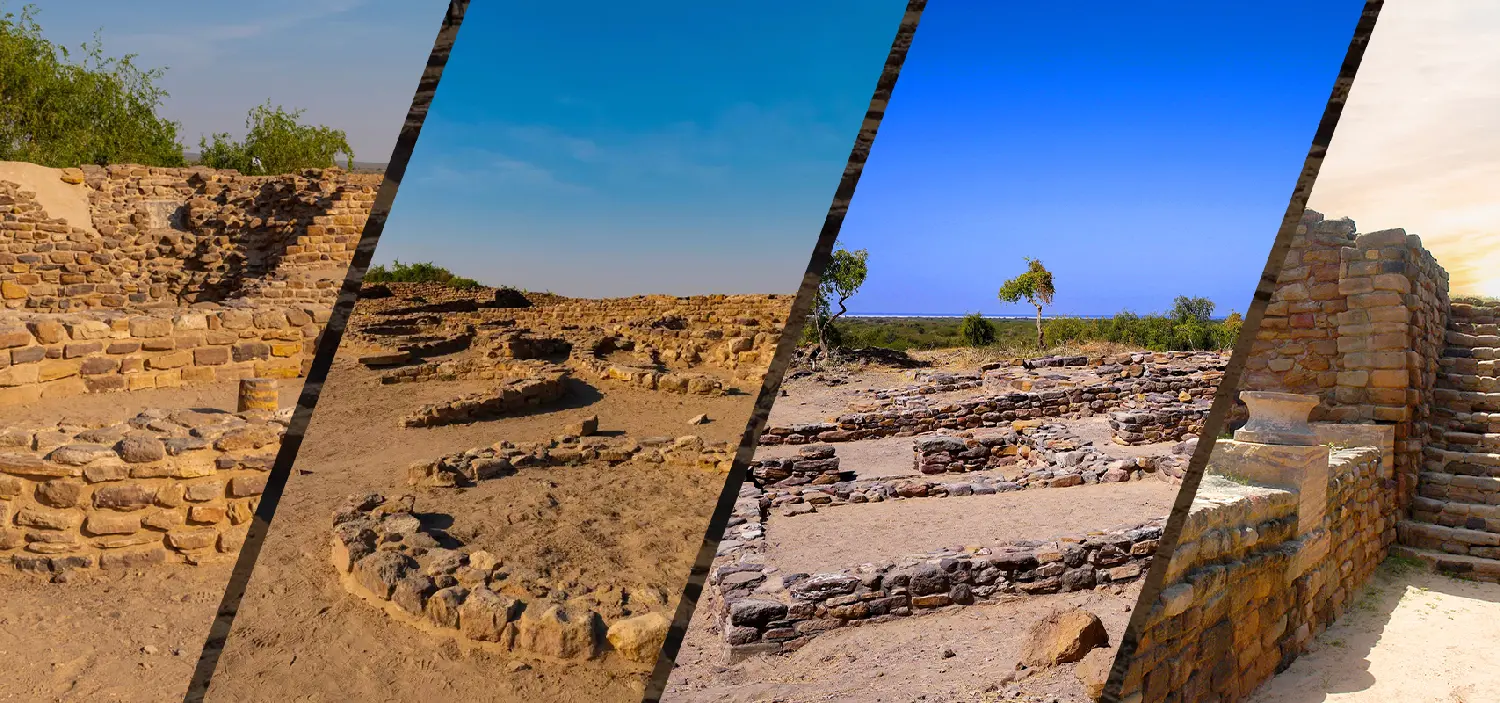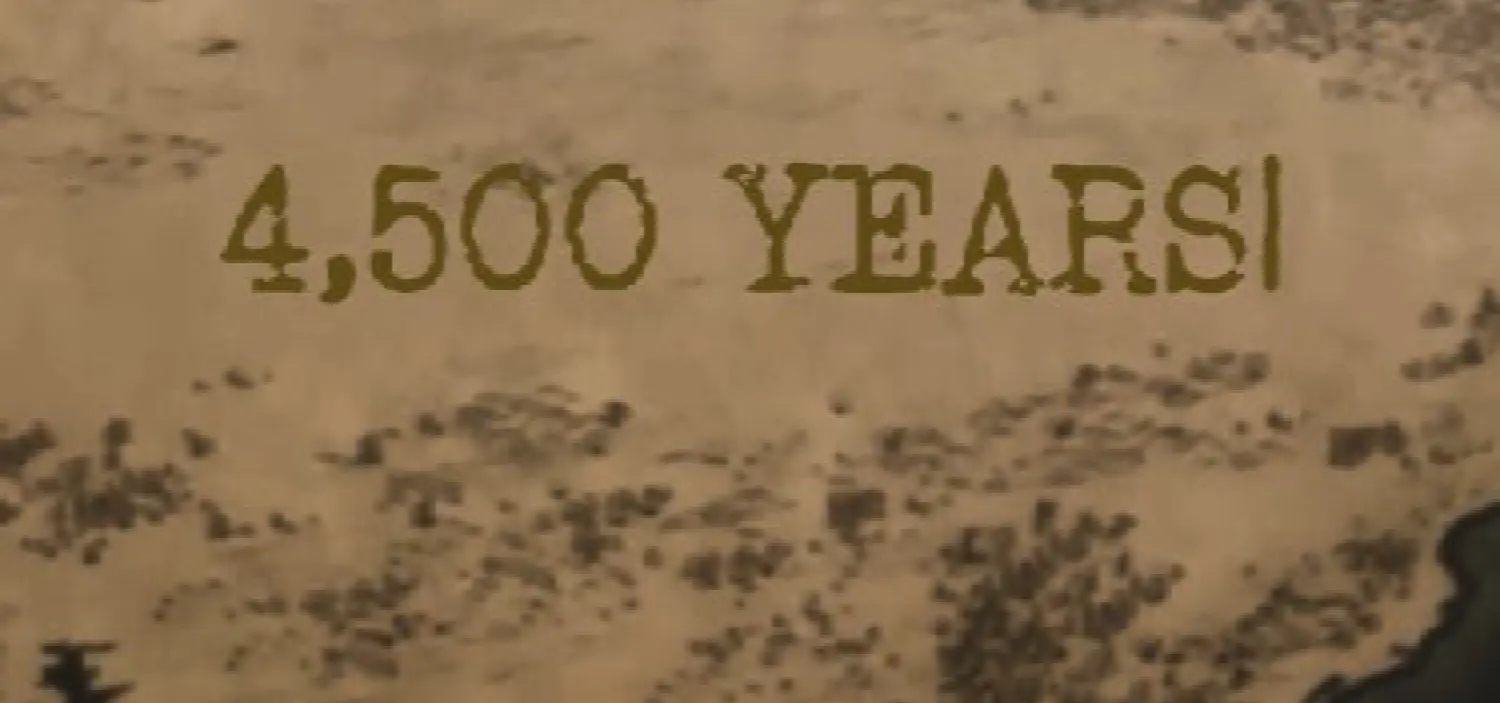Trade Routes of the Harappan Era: Dholavira’s Strategic Importance
Imagine walking through a 4,500‑year‑old city where ancient streets once buzzed with traders, camels, boats, and bustling markets. That’s Dholavira Harappan site—a city so advanced that its planned roads, water system, and fortified walls still amaze visitors today. It’s at the heart of a fascinating story of Indus Valley Civilization trade, and we invite you to step into that story by staying at Evoke Dholavira, your gateway to this ancient world.
Situated in the arid plains of Kutch, Gujarat, Dholavira was a central node in the Harappan trade routes, linking inland cities to rivers, hills, and the sea. In 2021, UNESCO added it to World Heritage, marking Gujarat’s pride and enriching its tourism legacy.
When you stay at Evoke Dholavira, you’re not just booking a comfortable retreat—you’re entering the heart of an extraordinary past, immersed in the same Dholavira strategic location that made this city a powerful player in the Harappan civilization economy.
Why Trade Was Important to the Harappans
Trade wasn’t just about buying and selling in Harappan times—it was about connecting cities, sharing ideas, and fueling civilization. The Harappan civilization economy depended on wide exchange networks that spread wealth, crops, tools, art, and knowledge from Dholavira to the world.
- Growth and prosperity: Agricultural produce and crafts from regions near Dholavira could reach far-off markets because of this Dholavira trade network.
- Cultural exchange: With traders came ideas—about city planning, writing systems, art, and architecture—that made cities like Dholavira shine.
- Innovation: Demand from trade pushed artisans in bead-making, metallurgy, and pottery to refine their skills and create products with new techniques and superior quality.

Key Trade Goods of the Harappan Civilization
At the heart of the Indus Valley Civilization trade were goods that defined the era:
- Beads and semi-precious stones (carnelian, lapis lazuli, jasper): Dholavira was famous for its bead workshops.
- Copper and bronze tools and ornaments: Sourced from the Aravalli and Rajasthan regions.
- Agricultural products: Barley, wheat, sesame, and dates traveled across vast areas.
- Pottery: The distinctive red‑and‑black ware was widely traded throughout India.
- Textiles and perfumes: Though no cloth survives, remnants of dye pits suggest textile craft; perfumes likely traveled far too.
These goods were channeled through various ancient trade routes in India, with Dholavira as a key waypoint.
Harappan Trade Routes
Overland Trade Routes
The Harappans carved out roads across rugged terrain:
- North‑west routes connected them to central Asia, Afghanistan, and beyond.
- East and south roads linked to other Harappan cities like Mohenjo‑Daro, Harappa, and Lothal, and to emerging southern civilizations.
Dholavira, with its strong outer walls and watchtowers, sat along these overland routes, securing traders’ journeys and forming the backbone of the Harappan trade routes.
Riverine Trade
Though there’s no big river beside modern Dholavira, the city used smaller seasonal rivers and channels:
- These waterways took goods inland to smaller settlements.
- They connected to larger rivers, enabling movement of bulky items like copper and grain, helping build Dholavira’s Dholavira trade network.
Maritime Trade
One of the best connections was sea travel:
- Dholavira was not far from the Arabian Sea coast—perfect for maritime trade in ancient India.
- Small boats could sail to ports like Lothal, Balakot (in today’s Pakistan), and even to Mesopotamia.
- Dockyards at nearby Harappan sites indicate a thriving sea trade route in the Indus Valley Civilization trade system.
Trade Partners
The vast Harappan trade routes spanned diverse regions:
- Central Asia & Afghanistan: Copper, lapis lazuli, and other stones came via passes over the Hindu Kush.
- Iran and Mesopotamia: Exchanged textiles, carnelian beads, and seals with Dholavira.
- South India: Traded beads and pottery with evolving Dravidian cultures.
- Gujarat coast and Arabian Sea neighbors: Dholavira’s coastal reach brought it into contact with island and Middle Eastern communities.
These widespread routes made Dholavira truly global in the ancient world. Staying at Evoke Dholavira means you are at the heart of this ancient crossroads.
Conclusion
Dholavira’s story is about a city that thrived because of its place in the Harappan civilization economy, powered by trade routes—overland, riverine, and maritime. These paths connected Dholavira to the world, fueling prosperity, innovation, and cultural growth.
Today, Evoke Dholavira offers more than a place to stay. It’s a portal to walk along the streets that once held traders, to hear the whispers of wind through its historic water systems, and to witness the brilliance of an ancient world. Join us and experience life at the crossroads of civilization.
Stay with Us at Evoke Dholavira
If you’re planning a visit to this ancient wonder, make your stay as memorable as the destination itself. Evoke Dholavira offers a serene and comfortable stay just minutes away from the archaeological site.
FAQs – Your Questions Answered
Dholavira was built with remarkable city planning, fortified walls, complex water management and a strategic layout that supported the Harappan civilization economy efficiently.
Dholavira was ideally located near ancient river channels and close to the Arabian Sea coast, making it a hub for maritime trade in ancient India and overland trade.
Sea routes linked Dholavira to coastal ports like Lothal and Balakot, and overseas markets in Mesopotamia—boosting the Indus Valley Civilization trade.
Key exports included carnelian beads, copper tools, precious stones, and pottery—products of skilled artisans.
Archaeologists discovered bead-making workshops, seals, port-like structures, roads, and water tanks—pointing to a well-connected trade network.
Its economy was highly organized, urbanized and interconnected—on par with Mesopotamia and Egypt—but had distinct hydraulic innovations and standardized town planning.
Yes! You can see remains of select channels and clues of dockyard-style structures near the site, showing its link to sea trade.
Absolutely. We offer guided historical tours highlighting Dholavira’s role in ancient trade, the city’s elaborate infrastructure, and the broader Indus Valley exchange network.


